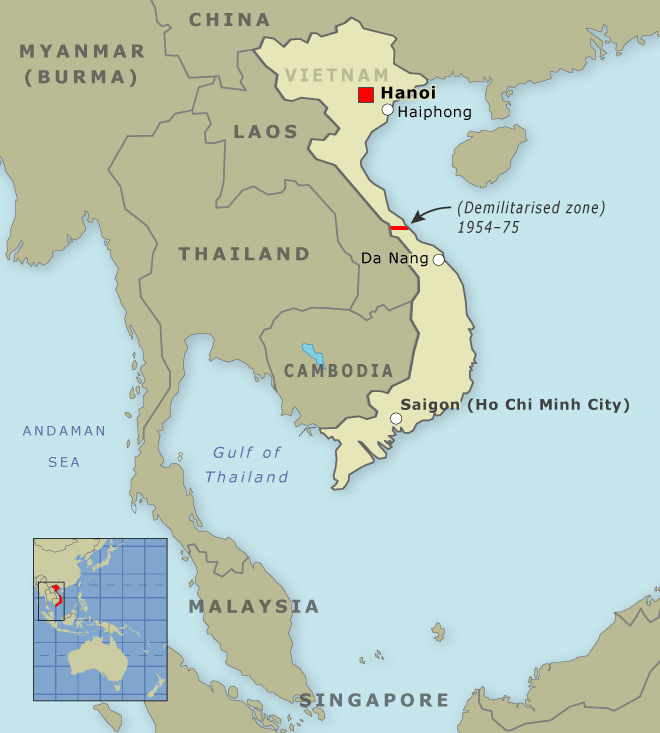
From 1954 to 1975 Vietnam was divided into two countries, North Vietnam (the Democratic Republic of Vietnam) and South Vietnam (the Republic of Vietnam). After its defeat at Bien Dien Phu, France signed an independence agreement with the victorious Viet Minh in Geneva. Vietnam would be divided by a demilitarised zone (the DMZ), with the French withdrawing their forces from Vietnam north of the zone and the Viet Minh withdrawing their forces from the south. An associated declaration stated that after the troop withdrawals an election would be held for the reunification of the country. This provision was never agreed to by the South Vietnamese or the United States, and the reunification election was not held. South Vietnam had been effectively independent since May 1954, and Ngo Dinh Diem declared it a republic after he became president through a questionable election in 1955. South Vietnam was heavily backed by the US, which saw it as a bulwark against communism. Before long Diem's authoritarian regime was challenged by local communists, backed by the regime in North Vietnam.
Using this item
Te Ara - The Encyclopedia of New Zealand

This item is licensed under a Creative Commons Attribution-NonCommercial 3.0 New Zealand Licence
Source: Ian McGibbon, New Zealand's Vietnam War: a history of combat, commitment and controversy. Auckland: Exisle, 2010, p. 21







Add new comment